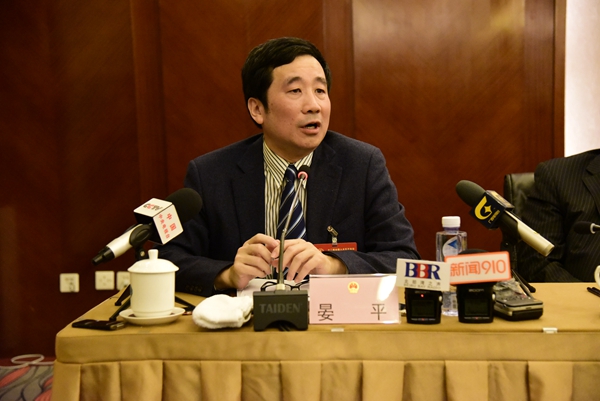 |
|
Yuchai Machinery chairman Yan Ping. [Photo by Wu Yan/chinadaily.com.cn] |
The head of Chinese engine manufacturer Yuchai Machinery Group says Beibu Gulf in South China is the best entry point for companies wanting to reach other Asian and South East Asian markets.
"Chinese companies should make good use of the platform to enter into the ASEAN markets," Yuchai Machinery chairman Yan Ping, who is also a deputy to the National People's Congress, said during the two sessions.
Yuchai has been selling into Southeast Asian countries since the beginning of the 21st century, starting off with sales in the several hundreds, to now selling about 30,000 engines every year. In Vietnam alone, 8,000 to 10,000 vehicle engines are sold every year, pushing the number of vehicles using Yuchai engines to 200,000.
"We saw double-digital growth in ASEAN countries in these years. There is big room for growth for Yuchai in ASEAN markets," Yan said.
He added that the energy revolution underway in those countries stimulates a huge demand for engines.
Sales of boat engines have also skyrocketed.
"Fishermen used to catch 300 tons of fish a year. After using boats with Yuchai's engines, they can catch 500 tons of fish," Yan said.
Yan encouraged more Chinese companies to enter ASEAN markets, but warned they have to know Southeast Asian nations' cultures and cater to their needs.
"Their peoples do not know Chinese products, so we have to promote our products," he said.
He believed border trading at Guangxi is a good way of advertising.
"Vietnamese can just drive cars to the border trading experimental zone to buy and sell goods," Yan said. "They know our products in this way. If a product is good, they will advertise the product through word-of-mouth."
Guangxi has been focused on opening up to ASEAN countries and is seen as a portal in the Belt and Road Initiative.
Its role is set to be further advanced after the State Council in January approved a development plan for the city cluster around Beibu Gulf in Guangdong and Hainan provinces and Guangxi Zhuang autonomous region, designating Guangxi's capital Nanning as the core of the city cluster.
"The number of flights increases, people exchanges increase, and the contacts between residents on the border of China and Vietnam become easier and easier," Yan said.
"The platform of Beibu Gulf will become the promotion window of Chinese products and culture going abroad," he said.
According to data from the Ministry of Commerce, the two-way trade volume between China and ASEAN countries totaled $452.2 billion and mutual investment $178 billion in 2016.
In the first two months of 2017, the two-way trade reached $68.8 billion, an increase of 16.7 percent compared to the same period last year.
Related Stories
